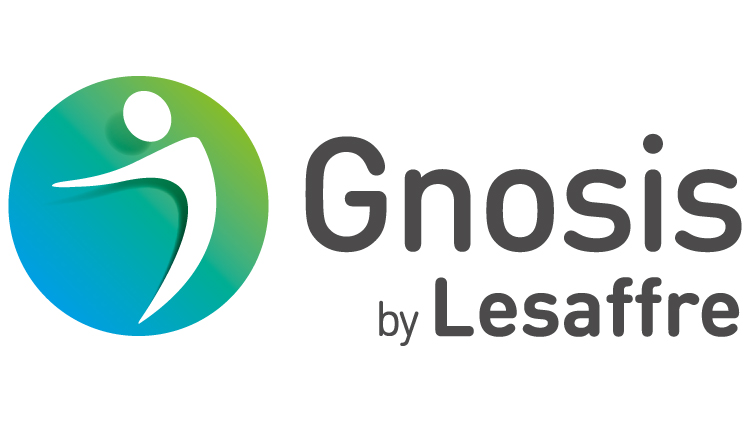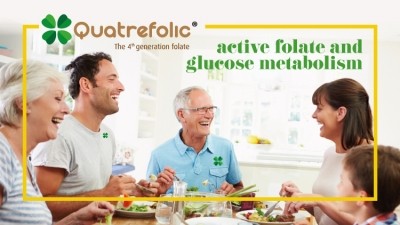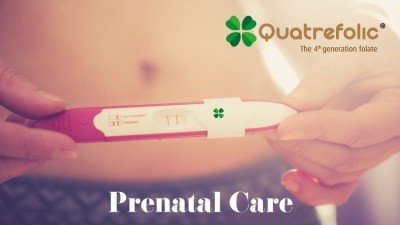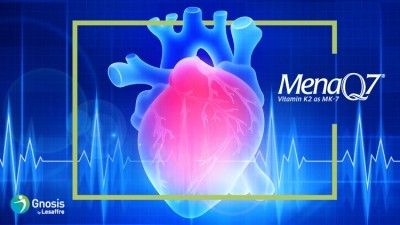Promotional Features
Active folate and human health: implications and perspectives in the new collection of Quatrefolic 360°.
Folate is the generic word used for a group of related compounds with similar nutritional properties including the naturally occurring food folate, the biologically active form, the L-methylfolate or 5-methyltetrahydrofolate, and the synthetic form folic acid. Dietary folate is converted to the biologically active form L-5-MTHF in the intestinal mucosa, and then it enters the circulation. Folate in dietary supplements most commonly appears as folic acid (inexpensive compound that is readily converted into active forms of the vitamin) and as 5-MTHF in a salt forms, like Quatrefolic , the glucosamine salt, that is absorbed as it is, doesn’t need to be metabolized, and is ready to undergo its biological role to support human health.
The advantages of the active folate 5-MTHF versus folic acid are in the limelight of consumers’ attention. People look even more for found-science aspects on folate world with dedicated information about its role, the suggested target of use, and the differences and potential advantages between the different folate forms. To meet this increasingly global need, Gnosis by Lesaffre has dedicated a collection of leaflets to its innovative folate, named Quatrefolic 360°, trying to capture the different trends and aspects of the market, and the latest recognized fact about the active folate in various applications: pregnancy, elderly, cardiovascular health, mood, fertility, menopausal and sexual health. F inally, the focus is always turned to grasp the advantages compared to the folic acid.
The importance of an active folate support during pregnancy and lactation
During pregnancy, the body requires 5–10-fold higher folate intakes . Folate is necessary for cell growth, cell division, cell synthesis and repair of DNA. Those needs are increasing to support embryonic and fetal development and maternal tissue growth and at the same time reduce the risk correlated of low birth weight, preterm birth, elevated homocysteine levels and the related adverse pregnancy outcomes.
During lactation, women are at risk of folate deficiency due to increased demands to accommodate milk folate levels. Through the breastfeeding period, the resources of vitamins are twice as solicited as it becomes demanding for the mother's health and the well-growth of the child.
The folate supplementation can also be necessary on periconceptional and the first period after conception because a woman often does not know she is pregnant. The women's folate levels should be high at least two months before the conception and should continue at that level for at least the first three months of pregnancy.
5-MTHF as a natural folate support to the aging process
Numerous physical and physiological changes occur during the ageing processes. Ageing is associated with changes in gastrointestinal function that could affect the absorption of different folate forms. Partly because of these changes, the risk of deficiencies of vitamin B12, folate and iron highly occur in older people. To prevent the blood formation, neurologic function, and cardiovascular function issues that they can lead to, nutritive supplement intake is recommended.
Thanks to its various health claims (EFSA approved ) related to psychological functions, reduction of tiredness and fatigue, cell division, normal homocysteine metabolism and well function of the immune system, folate is a good solution for elderly people.
Vitamin B12 deficiency has a prevalence approaching 20% in the elderly, and it is difficult to recognize. Folic acid intake and supplementation may mask vitamin B12 deficiency with a delay in diagnosis which can lead to anemia and peripheral nerve damage.
On the contrary, the 5-MTHF doesn’t mask the vitamin B12 deficiency and does not affect its possible diagnosis.
The potential role of the active folate in cardiovascular health
Folate deficiency is frequently associated with elevated plasma homocysteine (Hcy) concentration – hyperhomocysteinemia – that is considered a recognized risk factor for cardiovascular disease (CVD) and may also be associated with hypertension. Folate is an important regulator of Hcy metabolism: clinical studies report evidence that folate helps to maintain its normal plasma concentrations and its supplementation can reduce cardiovascular disease risk by lowering homocysteine levels.
Increased plasmatic levels of Hcy are determined by several factors (lifestyle, genetics and diet). Genetic mutations in MTHFR enzyme are the most commonly known inherited risk factor for elevated homocysteine levels. 5-MTHF works as a methyl donor for homocysteine remethylation in the one carbon metabolism cycle, supporting, normalizing or lowering homocysteine plasma levels.
Brain, mood and cognition health can benefit from active folate
5-MTHF is the only form of folate able to enter the brain without previous metabolism, crossing the brain-blood barrier (BBB) and then supporting brain function. In subjects with reduced metabolism of folate, due to a genetic polymorphisms of a key enzyme that allows the conversion of folic acid in the 5-MTHF – the 5-methylenetetrahydrofolate reductase (MTHFR) – the active folate supplementation may be a valid bioactive support.
A decline in folate levels in the cerebral spinal fluid (CSF) with age has been recognized and there is evidence causally relating folate levels to mental function, especially depression and dementia. Folate deficiency can contribute to depressed mood, and therefore folate supplementation may be useful for some depressed patients.
Moreover, a gradient relationship between homocysteine level and cognitive impairment is evident from many reviewed prospective studies.
Right folate levels in post-menopausal women
For women, folate can be a real ally all along their life, especially when it comes to menopausal symptoms. Studies have shown that homocysteine levels increase during this period which has been proven to be a factor of higher cardiovascular risks and osteoporosis. Other symptoms such as hot flashes, decreasing libido and mood swing can be supported thanks to folate.
Quatrefolic ingredient fits well into the overall folate supplementation requirements to support human health
Quatrefolic is considered a “finished” folate, meaning that the body can use it immediately without any kind of metabolization. Available as the glucosamine salt of the biologically active folate, 5-MTHF offers health benefits across the entire body, and may be particularly useful to provide the nutritionally active form of folate needed during preconception, pregnancy, and lactation.
Since it crosses the BBB , Quatrefolic supplementation is suggested to efficiently support cognitive functions, to guarantee the right dosage of biologically active folate into the brain.
By ensuring to all people the right dosage of active folate, independently by genetic polymorphism of enzymes involved in folate metabolization, Quatrefolic allows the full enjoyment of the golden years, having a role in the metabolism of homocysteine and in the maintenance of the healthy Hcy plasma levels.
Quatrefolic supplementation may also help postmenopausal women to normalize Hcy, contributing to help cardiovascular, bone health and other symptoms of menopause.







